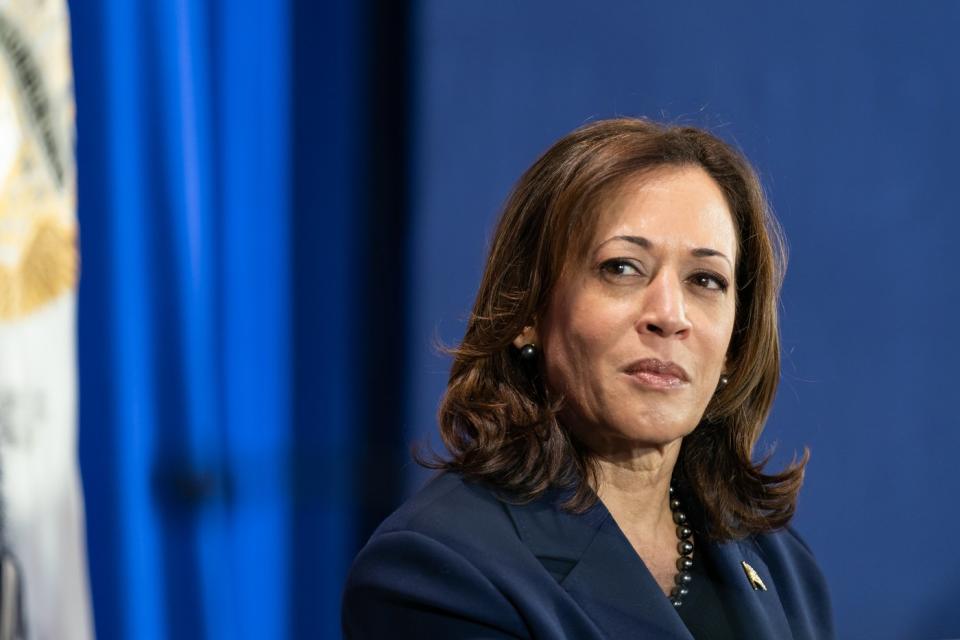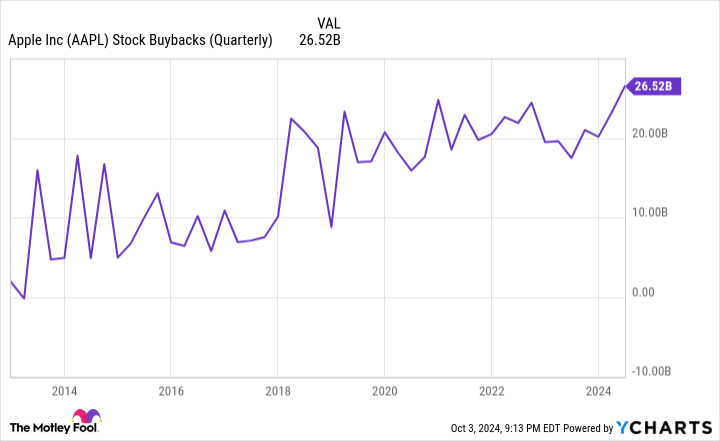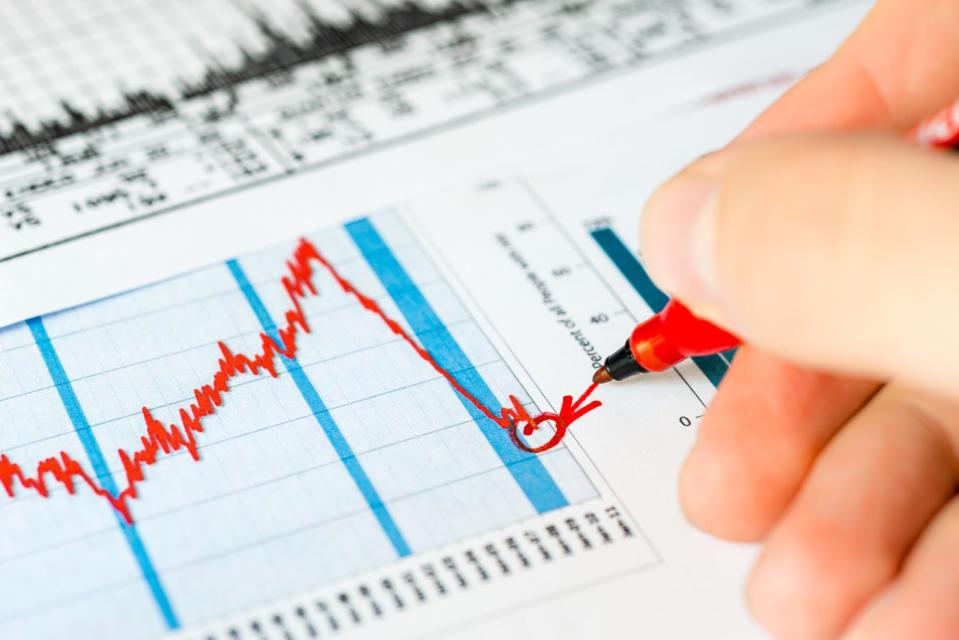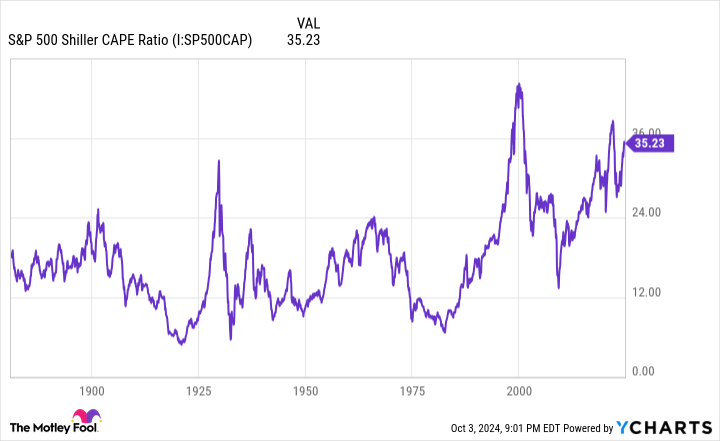Less than a month from today, on November 5, voters will go to the polls to determine which presidential candidate – current Vice President Kamala Harris or former President Donald Trump – will lead our country for the next four years.
Granted, not every decision made in the Oval Office or by our elected officials in Congress affects Wall Street. However, the economic policies implemented by the incoming president and Congress do have the potential to impact corporate profits, and thus the stock market.
While there are potential pros and cons to both candidates’ economic proposals, the one plan raising eyebrows on Wall Street is Harris’ call to increase corporate taxes by a third, from 21% to 28%.
Although the current US corporate tax rate is at its lowest level since 1939, raising it by 33% has the potential to send the stock market into disaster, for an under-the-radar reason.

Stocks could plummet if Harris raises corporate taxes, but not for the reason you might think
Kamala Harris’ plan to raise taxes on corporations comes amid persistent and growing federal deficits.
With the exception of the period 1998 to 2001, the federal government has spent more every year since 1970 than it brought in through revenue. The national debt now stands at approximately $35 trillion, while the annual cost of servicing this debt comes to roughly $1.05 trillion. of August 2024, according to the US Treasury Department. This trajectory will not be sustainable in the long term.
Based on Treasury Department estimates, raising the corporate tax rate by one-third to 28% would increase federal tax revenues by a total of $1.35 trillion over the next decade.
However, raising corporate taxes could have unintended and/or unforeseen consequences for Wall Street.
The logical expectation as the corporate tax rate rises is that companies will have less capital to spend on the meat and potatoes that drive them. Specifically, we will see a slower pace of new hires, fewer acquisitions and less capital expenditure on research and development. Hiring, acquisitions and innovation are usually the factors that increase operating results.
But there’s a less obvious concern that could cause stocks to plummet if corporate taxes rise by 33%. Less capital available to publicly traded companies could reduce or eliminate what has been a major source of earnings growth in recent years: share buybacks.


For companies with stable or growing net income, share buybacks can increase earnings per share (EPS). As a company’s number of shares outstanding decreases over time, its earnings per share should increase, making it fundamentally more attractive to investors.
On a rolling twelve-month (TTM) basis ending in March 2024, S&P500 (SNPINDEX: ^GSPC) companies have completed $816.5 billion in buybacks, which is technically lower than the TTM peak of $1.01 trillion for the period ending June 2022, based on data from S&P Global.
More importantly, 50.9% of the buybacks completed in the first quarter of 2024 were at the 20 largest companies by market cap in the S&P 500. Buybacks have been used to drive earnings growth for America’s largest and most influential companies to stir up, but this is not the case. There is no guarantee that this will continue if Harris wins in November and gets the votes on Capitol Hill to increase the corporate tax rate by a third.
The largest listed company in the world, measured by market capitalization, Apple (NASDAQ: AAPL)has repurchased $700.6 billion of common stock since the beginning of 2013, reducing the number of shares outstanding by 42.2%.
If Apple had not repurchased a single share in the last eleven years, the consensus EPS for fiscal 2024 (ending September 30) would be less than $4, not the current $6.68. Arguably, no company’s bottom line has been more affected by share buybacks in recent years than Wall Street’s largest publicly traded company.
If there is a silver lining to this concern, it is that a Fidelity study found that the benchmark S&P 500 rose by an average of 13% after every corporate tax increase since 1950. While this does not guarantee that stocks would rise if Harris were to raise the corporate tax rate from 21% to 28%, history strongly favors a continuation of the current bull market.


This could be even more worrying than the prospect of fewer share buybacks
While stock buybacks have been artificially boosting earnings per share for Wall Street’s largest companies for years, and a higher corporate tax rate could slow buyback activity, this may not be the most immediate concern for Wall Street. Instead, a historically expensive stock market could be the catalyst that sends stocks into a correction or bear market, regardless of who is elected president on November 5.
Frankly, there are many ways investors can measure value, and everyone has a different level of risk tolerance. But based on measurements of the S&P 500’s Shiller price-to-earnings (P/E) ratio, we’ve only seen a handful of cases in more than 150 years where stocks have collectively been this pricey. The Shiller P/E ratio is also called the cyclically adjusted price-earnings ratio or CAPE ratio.
Most investors rely on the traditional price-to-earnings ratio as a quick and easy way to determine whether a stock is relatively cheap or pricey compared to its peers and its own history. However, the traditional price-to-earnings ratio only takes into account TTM earnings, which can be distorted or negatively affected by shocking events, such as the temporary lockdowns that occurred during the pandemic.
The Shiller P/E ratio is based on average inflation-adjusted earnings over the past ten years. By covering a full decade of EPS history, the impact of shock events is minimized, leading to a more accurate measurement of value.


When the closing bell rang on October 3, the Shiller price-to-earnings ratio of the S&P 500 stood at 36.6, more than double the average reading of 17.16, backtested to January 1871. Even though lower interest rates and democratizing access to Internet information has increased the willingness of ordinary investors to take risks, a Shiller P/E of almost 37 is an excessive value.
Looking back to 1871, there have only been a total of six instances in which the S&P 500’s Shiller P/E exceeded 30 during a bull market rally, including the present. After the previous five events, the S&P 500, Dow Jones Industrial Average (DJINDICES: ^DJI)and/or Nasdaq Composite (NASDAQINDEX: ^IXIC)lose between 20% and 89% of their value.
While the Shiller P/E is not a timing tool (i.e. stocks can remain expensive for weeks, months, or in rare cases, several years), it does have an impeccable track record of predicting big declines in the S&P 500, Dow Jones. and Nasdaq Composite.
While it’s possible that Kamala Harris’ plan to raise corporate taxes by 33% would be bad news for Wall Street, historically expensive stock valuations are investors’ biggest enemy right now — and that’s unlikely to change anytime soon.
Should You Invest $1,000 in the S&P 500 Index Now?
Consider the following before purchasing shares in the S&P 500 Index:
The Motley Fool stock advisor The analyst team has just identified what they think is the 10 best stocks for investors to buy now… and the S&P 500 Index wasn’t one of them. The ten stocks that survived the cut could deliver monster returns in the coming years.
Think about when Nvidia created this list on April 15, 2005… if you had $1,000 invested at the time of our recommendation, you would have $765,523!*
Stock Advisor provides investors with an easy-to-follow blueprint for success, including portfolio building guidance, regular analyst updates, and two new stock picks per month. The Stock Advisor is on duty more than quadrupled the return of the S&P 500 since 2002*.
View the 10 stocks »
*Stock Advisor returns September 30, 2024
Sean Williams has no position in any of the stocks mentioned. The Motley Fool holds positions in and recommends Apple and S&P Global. The Motley Fool has a disclosure policy.
The subtle reason stocks could plummet if Kamala Harris raises corporate taxes by 33% was originally published by The Motley Fool





